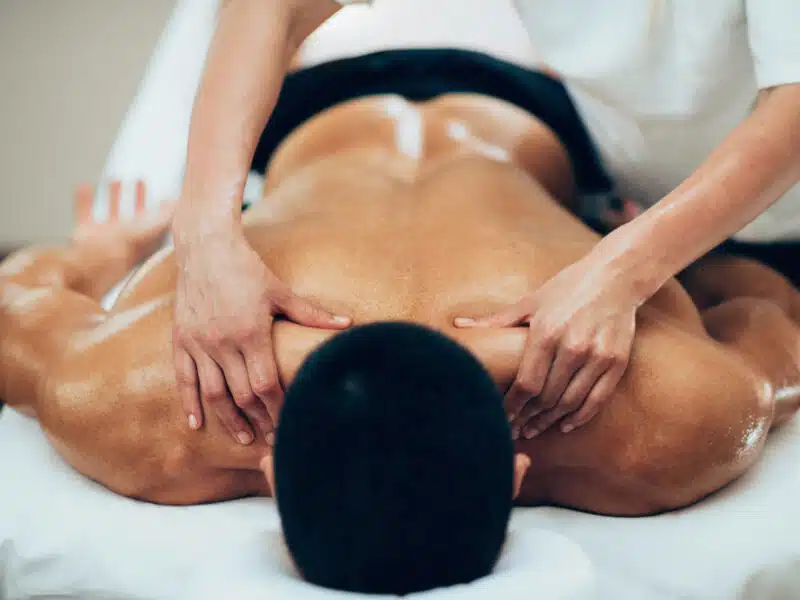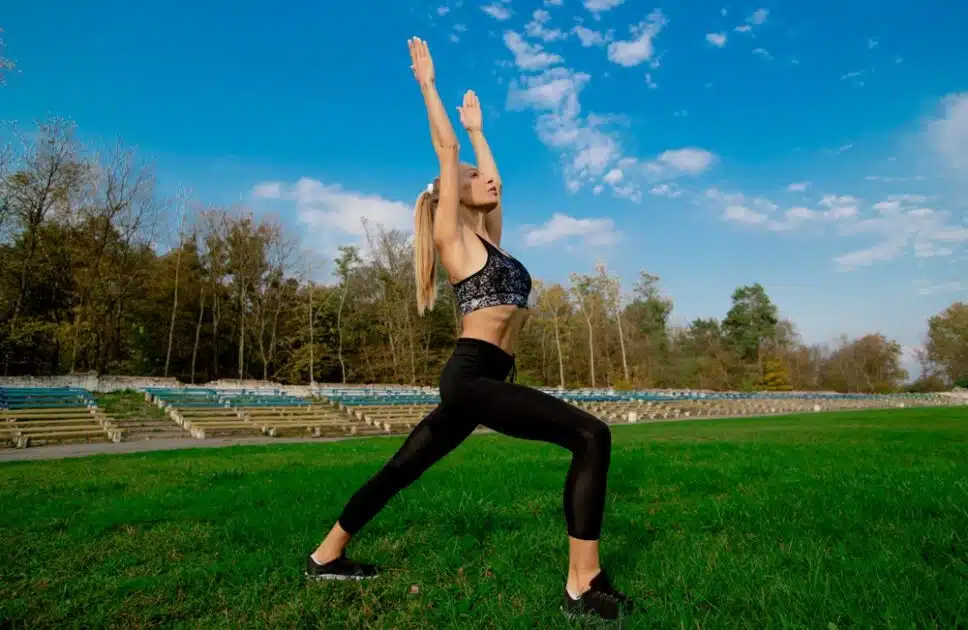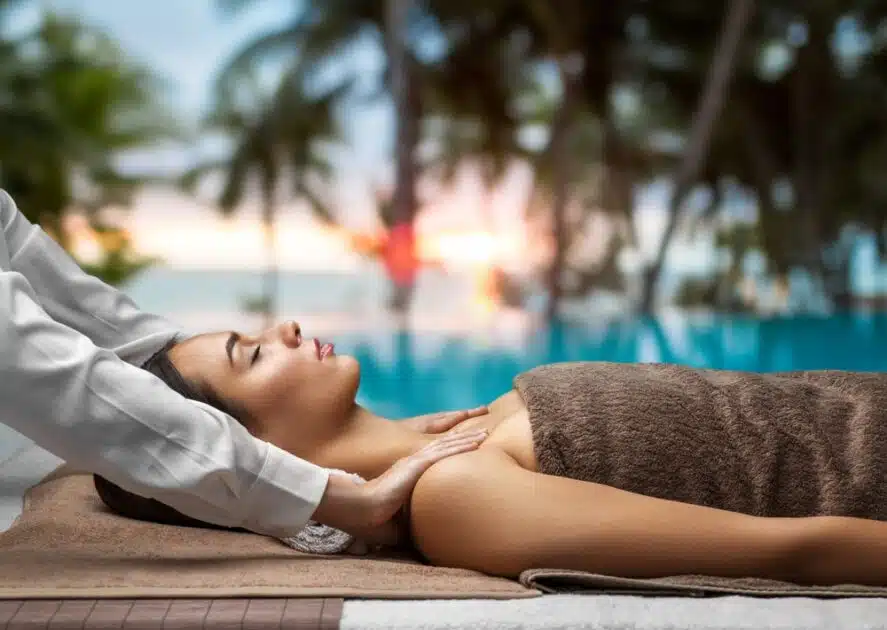Fitness Regimen: A Comprehensive Guide to Integrating Massage Therapy

Unlocking Potential: Elevating Your Fitness Journey through the Power of Massage Therapy
What is Massage 09th Jul, 2023
Massage therapy, long recognized as a powerful tool for stress reduction and relaxation, is increasingly earning a reputation as an essential element in a comprehensive fitness regimen.
From improving physical fitness performance to accelerating recovery, the therapeutic effects of massage extend far beyond relaxation.

This guide aims to highlight the numerous benefits of massage therapy and provide insight fitness into how you can seamlessly integrate it into your fitness routine.
Fitness Benefits of Massage Therapy
Numerous fitness-related benefits of massage improve both your training and recuperation periods. Here is a thorough breakdown of the main advantages:
- Boosted Blood Circulation:
An invigorating massage promotes blood flow, effectively supplying your muscles with the oxygen and vital nutrients they need. This enhanced circulation can help build denser, stronger muscles over time, significantly improving your overall strength and muscle tone. - Toxin Elimination:
A good massage can help flush out lactic acid and other waste products that build up in your muscles during a workout. This detoxification process facilitates faster recovery, enabling you to bounce back and get ready for your next workout sooner. - Improved Flexibility and Healing:
Massage therapy works wonders in terms of increasing muscle flexibility and joint range of motion. The therapy also bolsters the strength of connective tissues, expediting the healing of muscles and tissues, which is especially beneficial following strenuous workouts or injuries.
The Impact of Massage on Performance, Recovery, and Injury Prevention
Massage is widely believed to provide several advantages for athletes, coaches, and sports medicine specialists. From boosting blood flow to lowering muscular tension and neuronal excitability to creating a sense of well-being, there are several benefits.
Mechanical Pressure
Massage creates mechanical pressure that can increase joint range of motion, reduce passive and active stiffness, and increase muscle compliance.
Neurological Effects
Massage can modulate neural excitability, a measure assessed using the Hoffman reflex.
Physiological Mechanisms
Changes in heart rate, blood pressure, and cortisol levels post-massage can induce a relaxation response.
Psychological Mechanisms
Massage can alleviate anxiety and improve mood state, fostering relaxation.
However, the specific benefits of different massage kinds on performance, rehabilitation, and injury prevention remain unknown. It asks for a more thorough understanding of the mechanics behind each massage method.
Recommended:
Post-Workout Massages: Discover the Power of Blissful Recovery and Unlock 11 Life-Changing Benefits!

Fitness: A Comprehensive Approach
There are various advantages to leading an active lifestyle and including regular exercise in your daily routine. Fitness is much more than just losing a few pounds. It includes everything from increasing physical strength and endurance to improving mental health.
Injury Prevention in Fitness
While exercise is important for our health, improper approaches or overdoing can result in injury. It is critical to learn how to avoid injuries and continue to profit from your workout regimen:

Warm-up and Cool Down: Never skip your warm-up or cool down as these can help increase body temperature, improve flexibility, and reduce the risk of injury.
Proper Form: Using the correct form while exercising is crucial to avoid injuries. If you’re unsure, seek guidance from a fitness professional.
Gradual Intensity Increase: Increase your exercise intensity gradually over time. Sudden jumps in intensity can strain muscles and joints, leading to injuries.
Rest and Recovery: Your body needs time to repair and grow after a workout. Ensure you are giving your body enough rest between workouts.
Diverse Forms of Exercise
Engaging in various forms of exercise helps to maintain overall body fitness:
Cardiovascular Training: Running, cycling, swimming, or using cardio machines can help improve heart health and burn calories.
Resistance Training: Resistance or strength training can help build muscle mass and improve strength.
Flexibility Training: Exercises such as yoga or stretching routines can increase flexibility and reduce the risk of injury.
Balance Training: Balance exercises can help prevent falls, a common problem for older adults.
Nutrition for Fitness
Nutrition plays a pivotal role in fitness. What you eat can affect your workout performance and your recovery process:
Balanced Diet: A balanced diet, rich in proteins, healthy fats, and carbohydrates, provides the energy necessary for your workout and helps repair and build muscles post-workout.
Hydration: Staying hydrated before, during, and after a workout is essential as it aids in maintaining the body’s temperature and lubricating the joints.
Pre- and Post-Workout Meals: Eating a light, nutritious pre-workout meal can give you energy during the workout, and a protein-rich post-workout meal can assist with muscle recovery.
Exercises and Self-Care Fitness
Maintaining a healthy physique is essential for a long-term massage therapy practice. Here are some workouts and self-care recommendations:
- Shake hands at chest level for around 10 seconds to improve hand dexterity.
- Yoga, which develops muscles and promotes breathing and relaxation, might help you improve your balance and flexibility.
- Wall pushes will help you build upper-body strength.
- For isometric exercises that target specific muscle regions, use resistance bands.
- Regular walks will help you stretch your legs and enhance your cardiovascular health.
- Squeeze and release a tiny foam rubber ball or putty to improve grip strength and dexterity.
- Improve your chest and arm strength by moving side to side while holding your palms together at chest level.
Recommended:
Massage and Meditation: The Ultimate Relaxation Combo
The Bottom Line
Fitness is more than just tough workouts and strict diets. Taking a holistic approach to exercise by trying different techniques can really boost your health journey. Adding massage to your routine can help with relaxation, performance, recovery, and mental well-being.
It improves blood flow, removes toxins, enhances muscle function, and boosts flexibility for better workouts. Just make sure the massage fits your needs, whether it’s sports or Swedish, before or after your workout, and how often you need it.
FAQs
What is an exercise regimen?
An exercise regimen is a structured plan for physical activities to maintain or improve health and fitness.
What is a good training regimen?
A good training regimen is balanced, covering cardiovascular exercises, strength training, flexibility workouts, and rest days.
What are the 4 types of fitness?
The four types of fitness are: cardiovascular endurance, muscular strength, muscular endurance, and flexibility.
What are the 5 types of physical fitness exercise?
The five types of exercises to achieve full physical fitness are: aerobic, strength training, balance exercises, flexibility exercises, and functional training.
















